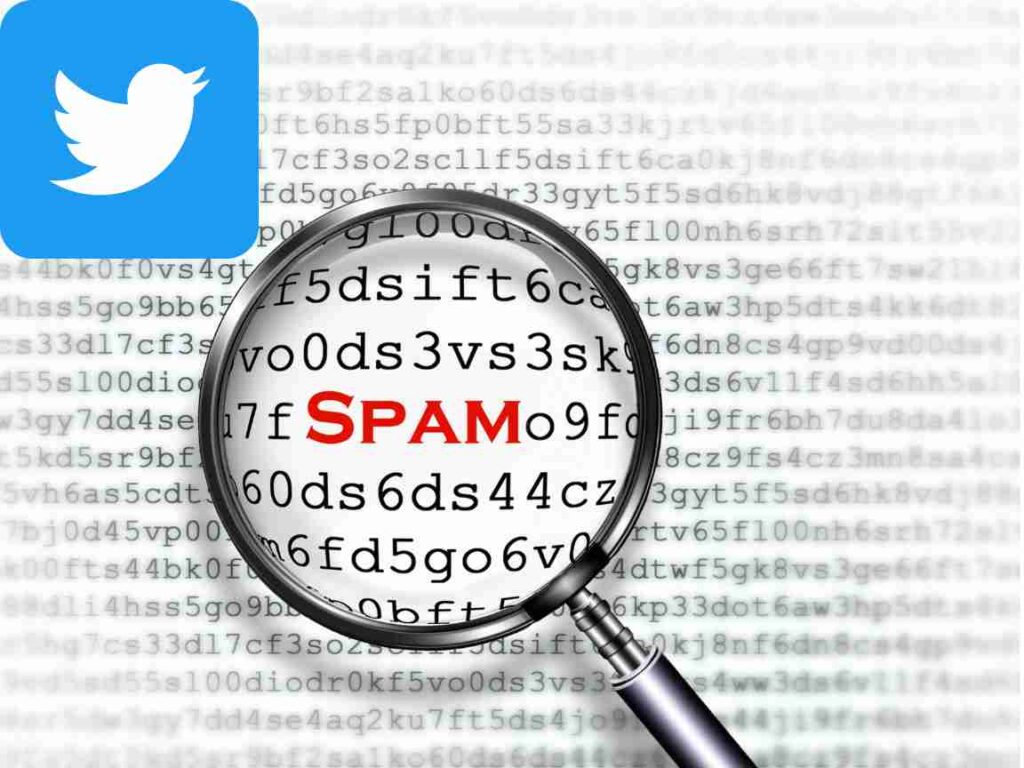In today’s digital age, social media platforms have become an integral part of our lives, connecting people from all corners of the globe. Among these platforms, Twitter stands out as one of the most popular and influential. However, with its widespread usage, Twitter has also become a breeding ground for spam. Countless users find themselves bombarded with unsolicited messages, fake accounts, and irrelevant content, which not only hampers the user experience but also poses potential security risks. In this article, we will delve into problem to stop Twitter spam accounts and explore effective strategies to block them.

Table of Contents
What is Twitter Spam
Before we delve into the methods of stopping Twitter spam, it’s crucial to understand what it entails. Twitter spam refers to the act of sending unsolicited and unwanted messages, tweets, or mentions to users. These spam activities often aim to promote a particular product, service, or website, or to deceive users into sharing personal information or engaging with malicious links. Spam can take various forms on Twitter, including automated bots, fake accounts, mass mentions, direct messages, and repetitive content.
Spammers are motivated by various factors, such as financial gain, spreading misinformation, or even carrying out targeted attacks. They exploit the open nature of Twitter, where anyone can create an account and engage with others. While Twitter employs algorithms and moderation systems to detect and take action against spam, it remains a persistent problem due to the ever-evolving tactics used by spammers.
Impact of Twitter Spam
Twitter spam not only disrupts the user experience but also poses significant risks to individuals and organizations. Let’s explore the various impacts of Twitter spam:
- Reduced user engagement: Constantly being bombarded with spam messages and irrelevant content discourages users from actively participating in conversations, thereby reducing overall engagement on the platform.
- Information overload: Spam floods users’ timelines and notifications, making it difficult to find genuine and relevant content. This overload diminishes the value of Twitter as an information-sharing platform.
- Privacy and security risks: Spam messages may contain malicious links or requests for personal information. Clicking on such links or sharing sensitive data can lead to privacy breaches, identity theft, or even malware infections.
- Trust and credibility concerns: The presence of spam undermines the credibility of Twitter as a reliable source of information. Users may question the authenticity of accounts and hesitate to trust the content they come across.
To address these concerns, individuals and organizations need to be proactive in blocking Twitter spam and taking necessary precautions to safeguard their online presence.
Strategies to Block Twitter Spam
As an individual user, you have control over your Twitter experience and can implement various strategies to block the impact of spam. Let’s explore some effective techniques:

- Adjusting privacy settings: Review your privacy settings and ensure that your account is set to receive messages and mentions only from people you follow. This step can significantly reduce the likelihood of receiving spam from unknown or suspicious accounts.
- Be careful what you click on: Before engaging with a new follower or clicking on links shared by others, take a moment to evaluate the account’s authenticity. Look for signs such as a genuine profile picture, a verified badge, a reasonable follower-to-following ratio, and meaningful activity on their timeline.
- Blocking and reporting spam accounts: Twitter provides features to block and report accounts that engage in spamming activities. When you encounter a spam account, promptly block it to prevent further interactions and report it to Twitter. This helps in raising awareness and contributes to the platform’s ongoing efforts to combat spam.
- Avoiding suspicious links: Be cautious of links shared on Twitter, especially those originating from unfamiliar accounts or direct messages. Before clicking on a link, hover over it to preview the destination URL. If the link looks suspicious or redirects to an unknown website, refrain from clicking on it to avoid potential security risks.
- Utilize Twitter’s Mute and Filter Options: Twitter offers powerful features like muting and filtering, allowing you to control the content you see in your feed.
- Muting specific accounts allows you to silence their tweets, retweets, and replies without unfollowing them. This feature is useful when you encounter accounts that consistently post spammy or irrelevant content. To mute an account, visit their profile, click on the three-dot menu, and select “Mute.”
- Filtering, on the other hand, enables you to limit the appearance of certain types of content in your feed. For example, you can choose to filter out replies from accounts without profile pictures or hide tweets that contain specific keywords. To access the filtering options, go to your Twitter settings, select “Privacy and Safety,” and then click on “Advanced Filters.”
- Safe mode is a temporary setting that hides all tweets from accounts that you don’t follow. This can help to reduce the amount of spam you see in your timeline.
- Implementing strict account vetting: Before following or engaging with accounts, thoroughly vet their authenticity and relevance to your organization’s interests. This approach helps in filtering out potential spam accounts and ensures that your interactions are meaningful and productive.
- Using third-party tools and services: Several vendors offer specialized tools and services to block Twitter spam. These tools utilize advanced algorithms and machine learning techniques to detect and filter out spam accounts, mass mentions, and unwanted content. However, before adopting any vendor’s solution, carefully evaluate its pros and cons, considering factors such as accuracy, cost, ease of integration, and potential impact on genuine interactions.
- Keep your Twitter account secure: Enabling two-factor authentication (2FA) adds an extra layer of security to your Twitter account. With 2FA, you are required to provide an additional verification step, such as a unique code sent to your phone, when logging in to your account. By implementing 2FA, you protect your account from unauthorized access and potential spamming attempts. Many instances of spam are a result of compromised accounts, so fortifying your account security is a proactive measure in combating spam.
While these strategies can help combat Twitter spam, it’s essential to be aware of the limitations and potential drawbacks associated with each approach. Let’s examine the pros and cons of using third-party tools to combat spam in the next section.
Third-Party Tools to Stop Twitter Spam Accounts
IThere are several third-party tools available that can help you identify and combat Twitter spam. These tools utilize various algorithms and indicators to detect spam accounts and provide additional layers of protection. Here are a few notable options:
Twitter Audit
Twitter Audit is a tool that allows you to audit your followers and identify fake or inactive accounts. It provides a percentage score indicating the likelihood of an account being genuine. With Twitter Audit, you can assess the authenticity of your followers and take necessary actions to remove spammy or inactive accounts.
Features:
- Enables auditing of your follower base for spam and inactive accounts.
- Provides a percentage score indicating the authenticity of each account.
- Helps maintain a higher-quality follower list.
These third-party tools can be valuable additions to your arsenal in the fight against Twitter spam. However, it’s essential to remember that no tool is foolproof, and false positives or negatives can occur. Use them as complementary resources alongside your own judgment and the strategies mentioned earlier.
Hootsuite
Hootsuite is a widely-used social media management platform that offers features to manage and filter Twitter spam effectively. It provides a centralized dashboard for monitoring multiple social media accounts, including Twitter. Here are the pros and cons of using Hootsuite:
Features:
- Advanced filtering options: Hootsuite allows you to create custom filters to block or hide specific keywords or phrases associated with spam.
- Streamlined interface: The user-friendly interface of Hootsuite simplifies the process of monitoring and moderating Twitter accounts.
- Analytics and reporting: Hootsuite provides comprehensive analytics and reporting features that help you track engagement, identify trends, and measure the effectiveness of your anti-spam efforts.
Sprout Social
Sprout Social is another comprehensive social media management tool that can assist in combating Twitter spam. It offers robust analytics, spam detection, and moderation features. Let’s explore the pros and cons:
Features:
- Sprout Social utilizes advanced algorithms to identify potential spam accounts and content, allowing you to proactively take action.
- Sprout Social provides in-depth analytics and reporting, enabling you to measure the impact of your anti-spam efforts and make data-driven decisions.
- The platform’s unified inbox streamlines the process of managing Twitter interactions, including flagging and responding to spam accounts.
It’s essential to carefully evaluate the pros and cons of vendor solutions before deciding on the most suitable option for your specific needs. Consider factors such as budget, desired functionalities, and ease of use to make an informed decision.
Disadvantages of Third-Party Spam Detection Tools
When it comes to stopping Twitter spam, several vendors offer specialized tools and services designed to detect and filter out spam accounts and unwanted content. While these tools can be valuable assets for organizations and businesses, it’s important to consider their pros and cons before making a decision. Let’s explore the advantages and drawbacks of using third-party spam detection tools:
- Cost implications: Utilizing third-party spam detection tools often comes at a cost. The price can vary depending on the vendor, the scale of usage, and the level of features and support provided. Organizations should carefully evaluate the cost-benefit ratio before investing in such tools.
- Reliance on external systems: Depending solely on third-party tools for spam detection means placing a level of trust in their effectiveness and reliability. If the tool experiences technical issues or fails to keep pace with evolving spamming tactics, it may result in missed spam detections or false negatives.
- Potential impact on genuine interactions: While the aim is to filter out spam, there is a possibility that some genuine interactions may also be mistakenly flagged as spam by the third-party tool. This can lead to missed opportunities for engagement or even alienate legitimate users. Regular monitoring and fine-tuning of the tool’s settings are necessary to mitigate this risk.
When considering a third-party spam detection tool, organizations should carefully weigh pros and cons, taking into account their specific needs, budget, and tolerance for potential false positives or negatives.
Wrapping Up
By understanding the nature of Twitter spam and implementing proactive strategies to stop and block them, we can minimize its impact and create a safer and more enjoyable Twitter experience. Here’s a recap of the key points discussed:
- Twitter spam refers to unsolicited and unwanted messages, mentions, and content that disrupts the user experience and poses security risks.
- The impact of Twitter spam includes reduced user engagement, information overload, privacy and security risks, and credibility concerns.
- Strategies include adjusting privacy settings, being cautious of suspicious accounts, blocking and reporting spam accounts, and avoiding suspicious links.
- Third-party spam detection tools offer enhanced accuracy and time-saving benefits, but also come with cost implications and reliance on external systems.
Now that you’re equipped with knowledge and strategies to combat Twitter spam, it’s time to put them into action. Review your privacy settings, be vigilant of suspicious accounts, report spam when you encounter it, and actively contribute to the community’s efforts in combating spam on Twitter. Together, we can create a safer and more enjoyable Twitter experience for everyone.

Comment spam is a fact of life if you have a blog. Using WordPress, you have not only solid built-in tools to prevent comment spam. emails